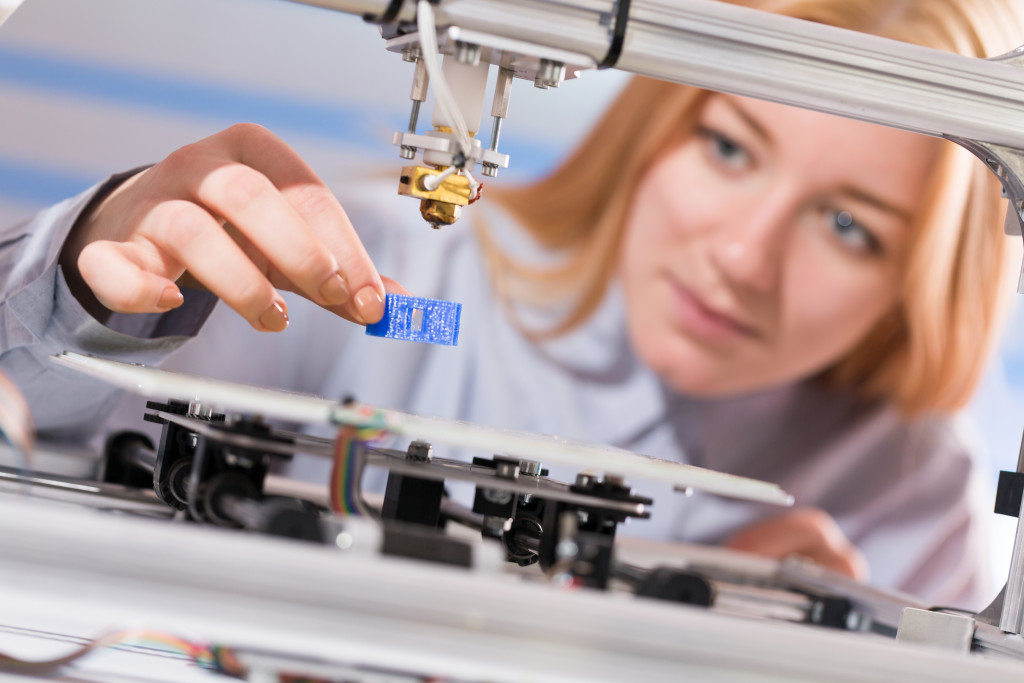Technologies made available these days are helping us manage during the pandemic. We only need to recognize the different innovations to accomplish numerous tasks, including safely interacting with other people in the community.
The Covid-19 pandemic made community living a more complicated feat. Socializing with neighbors in real life is no longer advised. People living in shared spaces now take extra precautions to avoid contracting the virus. The same goes for running simple errands.
When social distancing and sheltering became the new normal, many of us found it hard to cope. We miss socializing with our loved ones, friends, even our neighbors and coworkers. Even a trip to the doctor for regular checkups became a huge deal.
The following are five technologies many local communities are currently utilizing during the crisis.
3D Printers
We have been utilizing 3D printers even before the crisis. 3D printing is popular in many industries, including the following.
Education
Schools use 3D printers to create content to aid their curriculum. Some use these to design and produce models used in different applications, like architectural and engineering principles. This helps students learn various applications better, minus the costly side of prototype production.
Medicine
These days, many companies create customized prosthetics using 3D printing. They use 3D printers for artificial organs and prosthetics. Many are now using 3d printed parts after specific injuries led them with one less a limb or two.
Manufacturing
Importing materials used in the manufacturing industry can be costly and time-consuming. Thanks to 3D printing, manufacturing companies can now create complex designs without resorting to importing. This helps boost efficiency while reducing business costs.
During the pandemic, communities turned to their local 3D printer manufacturer. We now use 3D printing to provide front liners, especially those in the healthcare field, with their much-needed personal protective equipment. Medics and professionals received 3D printed face shields which are part of their uniform while treating and caring for COVID-19 patients.
Local charities, organizations, and regular community members responded by lending 3D printers and using their supplies to create a more suitable face shield design. Donations poured after fundraising events. This gave front liners more supplies they can use in their respective fields. This, in turn, aided in reducing the risk of contamination while caring for the sick.

Social Media
More people turned to social media to keep in touch with their loved ones during the pandemic. This turned out to be one of the safest ways to socialize in the comforts of their home. Many businesses now use social media to tap on their target audiences.
Different community leaders, the government, and healthcare professionals now leverage social media to spread Covid-19 facts. They use this to teach the importance of social distancing, self-isolation, and quarantine. This helped more people cope during the crisis the safe way.
People use social media to find the information they need while sheltering in place. This helped more people gain access to the correct data they badly need during the crisis. This includes managing their addiction, eating disorder, and pandemic-related anxiety and stress.
Telehealth
Enjoying real-time healthcare services can be complicated, especially in rural areas. This is why more healthcare providers are turning to telehealth. This helps them provide urgent care for low-risk patients and screen suspected COVID-19 patients.
Telehealth helps in boosting patient health outcomes. This gives us better peace of mind knowing they can still get the healthcare services they need while staying home. One gets to access primary, specialty, chronic, and acute care remotely using telehealth.
These are three telehealth modalities used to connect patients to their healthcare providers.
- Remote patient monitoring — This enables direct conveyance of patient’s clinical measurements among the different healthcare providers responsible for their care.
- Synchronous — This is the use of telephone and live audio-video interaction during real-time consultation with their healthcare provider.
- Asynchronous — This uses straightforward technology in collecting, sharing, and storing patient data while patient portals allow patients and their providers to communicate in a secure channel.
Cybersecurity
Cybersecurity became a significant issue during the pandemic. Cybercriminals are now exploiting the weak points of different organizations to gain access to pertinent data. This already caused devastating effects in numerous organizations.
Cybercriminals turned to hospitals and other healthcare facilities. They are targeting the healthcare system as the healthcare sector boosted their online efforts during the pandemic. This is why more healthcare organizations are now investing in professional cyber security services to better safeguard their data.
The pandemic turned more people and organizations into tech-dependent users. The good news is, most of these innovations are helping communities thrive in the middle of the crisis. Technology allows people to enjoy better access to healthcare, better health and security among frontline workers, and improved cyber security. These also helped pave the way for better exchange of communication as we shelter in place.




